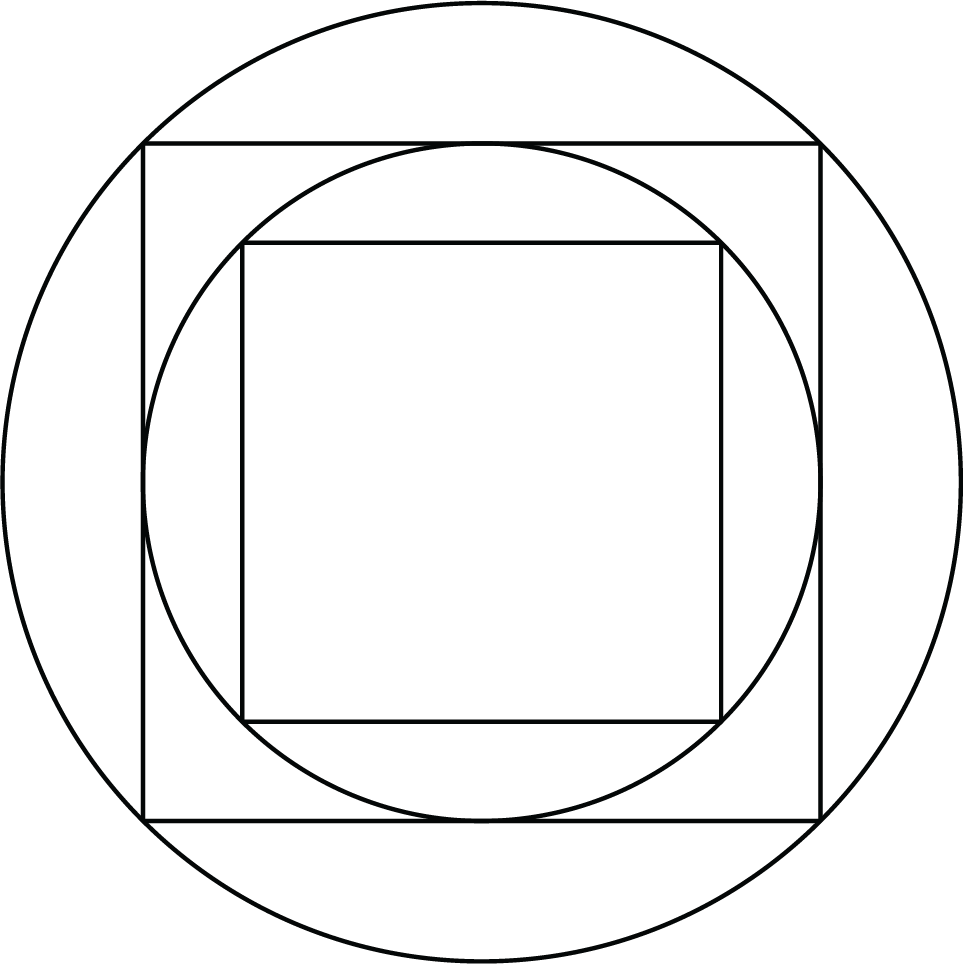
On a Robot and a Prayer
[00:00:00] Kurtis Schaeffer I'm Kurtis Schaeffer
[00:00:01] Martien Halvorson-Taylor and I'm Martien Halverson-Taylor, and this is Sacred & Profane.
[00:00:06] Kurtis Schaeffer Today on the show, we'll be getting a little technical that is diving into some fascinating new religious technology technology that forces us to think about what it means to be religious and maybe even what it means to be human.
[00:00:20] Martien Halvorson-Taylor So religious technology is any object that helps practitioners worship, pray, complete rituals or perform almost any activity within a religious tradition. Church bells. Our technology. So our Buddhist prayer wheels and the Islamic minaret, we could even consider candles or incense or stained glass religious technology. Now a lot of religious technology feels deeply traditional, but in this case, the technology we're talking about hasn't been used for centuries or become widely accepted. We're talking about religious robots.
[00:01:06] Holly Walters Yes, there's quite a few of them now, actually at this point.
[00:01:11] Kurtis Schaeffer This is Professor Holly Walters.
[00:01:13] Holly Walters So my name is Holly Walters. I'm an anthropologist on the Faculty of Wellesley College in Wellesley, Massachusetts. The ones I think that people are becoming more familiar with are the robot Buddhist monks of Japan. So there's actually, I think about four or five of them now. One of them is called Sophia. One of them is called Pepper. Some young tell me that. All in all. And these are robots that are designed to act as either Buddhist or Shinto monks. They chant mantras, they perform rituals, they do death rites, some of them, they're even starting to develop AI. So you can sort of communicate with them in a therapeutic sense.
[00:02:07] Kurtis Schaeffer By the way, these robots are not just found in Japan. There are Buddhist robots in Chinese temples, too, and robots are also becoming more common in India and Nepal, where robotic arms perform rituals in Hindu temples
[00:02:21] Holly Walters in the Hindu context. The robots are more, more of a kind of form of mechanized or ritual. So the robots in these cases are like the the automated puja arm, which conducts big festival puja. But they're also now moving towards actual like animatronic deities in a temple. So when you go to see a temple deity instead of seeing this big, beautiful statue like you normally would have, it's actually a robot.
[00:02:53] Martien Halvorson-Taylor These robots are often meant as practical solutions to solve logistical problems in both Hindu and Buddhist communities worldwide. The number of priests is dropping. That's left us without priests to regularly perform important rituals like funerals and weddings. The pandemic has created even more pressure on faith leaders, as many governments urged believers to stay home and delay large gatherings. To put it simply, a robot can't get sick, and it can help with the backlog.
[00:03:31] Kurtis Schaeffer But even as they solve the problem of short staffed temples and pandemic social distancing, religious robots raise questions that are not always easy to answer.
[00:03:41] Holly Walters The question of what is a religious robot is a complicated one in that we're talking about robots that become deified robots themselves that come to stand in for the divine. And we're also talking about robots that ritually stand in for humans, virtually standing in for people.
[00:04:03] Martien Halvorson-Taylor Religious robots raise some of the same issues that the presence of industrial or service robots have raised for decades. The first is that robots can make us feel uncomfortable.
[00:04:14] 30 Rock clip They can't do it because of the uncanny valley.
[00:04:18] Holly Walters The human mind is exceptionally good at reading faces and understanding faces and feelings.
[00:04:27] 30 Rock clip Let me show you something.
[00:04:28] 30 Rock clip Check out this chart you see, as artificial representations of humans become more and more realistic. They reach a point where they stop being endearing and become creepy
[00:04:38] Holly Walters when the human brain encounters a face that looks human but not human enough. It gets very, very uncomfortable with that face, and it actually finds that face disturbing.
[00:04:53] 30 Rock clip Tell it to me and Star Wars. All right. We like R2-D2 and C-3PO. They're nice. And up here, we have a real person like Han Solo. He acts like he doesn't care, but he does. But down here we have a CGI stormtrooper or Tom Hanks in the Polar Express. I'm scared.
[00:05:09] 30 Rock clip Get me out of it.
[00:05:11] Holly Walters The more human face begins to look, the less our brains want to accept it as being human until it basically crosses a threshold of looking like an actual human.
[00:05:25] Kurtis Schaeffer That's the problem. You're in the valley now, and it's impossible to get out. That helps me understand a question I had when I looked at Pepper and when I listened to Pepper
[00:05:46] Kurtis Schaeffer I wondered, why did they make it such a quote unquote computer voice that Pepper uses because they could have easily made it much more like
[00:05:57] Holly Walters a human? And I think that's generally the case with a lot of these. How human, exactly do you want these robots to feel because they do actually bring up a number of pretty serious theological questions?
[00:06:12] Martien Halvorson-Taylor Those theological questions are the second reason that many are uncomfortable with the idea of robots standing in for deities, practitioners or priests. If the robot can both give and receive prayers and offerings, what space is left for the human practitioner?
[00:06:35] Holly Walters For Hindus, for example, if the point of ritual puja is to have this reciprocal relationship with the Divine two, to have your intimate relationship with a deity, if your robot is performing that, who exactly has this relationship? Does the robot have the relationship with the divine or do you? And in the same sort of respect for a lot of Buddhists, if you're going to a robot priest to have your death rites chanted or to have your mantras chanted or for healing, what exactly are you having a relationship with?
[00:07:23] Martien Halvorson-Taylor In some ways, robots are sitting squarely in the middle of an argument that we have had about religion for thousands of years. Is what matters what we believe about the divine or is it our actions and practices that matter sometimes in religion? Action is more important than belief. How you do it takes precedence over why you do it.
[00:07:52] Kurtis Schaeffer So you could look at religious robots as a continuation of long traditions of religious machines, take Buddhist prayer wheels, some prayer wheels rely on human practitioners to twirl them. But there are many that run on water or solar power, flinging out mantras nonstop and accumulating merit. When humans would have to rest, eat or sleep,
[00:08:14] Holly Walters it's essentially automated praying. One of the famous prayer wheels in Mustang Nepal is six feet tall and has a propeller set on the bottom of it, and it's put in the river, so the river is constantly spinning it every time. Obviously, the current goes past it, and so no one needs to actually do those prayers.
[00:08:40] Kurtis Schaeffer It's always
[00:08:41] Holly Walters been spoken. It is always being said. It is always accumulating Divine Mary.
[00:08:48] Martien Halvorson-Taylor Humans have a hard time praying ceaselessly or perfectly machines, on the other hand, are excellent at repeating the same action over and over again with little variation.
[00:09:05] Holly Walters People tend to perceive robot religion in Hinduism and Buddhism as a natural progression, as humans are capable of building more and more complex technological solutions. Essentially, a spinning prayer wheel in a river is not functionally different than a robot monk chants your mantra for you.
[00:09:31] Martien Halvorson-Taylor The idea that machines can exponentially increase productivity and innovate ways around our human weaknesses is not just confined to religion, of course, Silicon Valley is built on the idea that ever more well-designed machines will fix everything from traffic accidents to medical testing.
[00:09:51] Holly Walters It's techno salvationism, which is just really a very long word for a concept I guarantee you most people have encountered. Technosalvationism is essentially this idea that we can fix all human failings with the correct application of technology, sort of like better living through chemistry. But now it's better living through technology.
[00:10:15] Kurtis Schaeffer So this is the appeal of technology perfecting human nature. Even the most dedicated human practitioner can make mistakes if you believe that what is important about a ritual is how accurately you perform it. You can't beat a robot.
[00:10:30] Holly Walters Humans, obviously, we get stuff wrong. We mispronounce the mantra. We don't necessarily do the ritual right. We get tired. And in Hinduism or Buddhism, that's what's at the core. That's what's important. You're it's not predicated on this internal state of belief in the way that, for example, Christianity is, but rather the action of ritual in the world. And humans get that wrong. So techno salvationism basically says if you have a robot, do it. The robot gets it right. The robot gets it perfect every time. And so the work that it's doing for a lot of people is number one. It's filling in. Yes, where there is a shortage of monks and priests and people who are ritual specialists. But it's also filling in this idea of the way that humans fail at being religious. If that makes sense.
[00:11:36] Martien Halvorson-Taylor So this idea that humans can fail at being religious or that robots can do a better job at being religious. Strikes me as one that might make a lot of people uneasy. Are people struggling with that idea?
[00:11:50] Holly Walters Of course. And that really gets at the heart of the fears of techno salvationism, which is, you know, there isn't a perfect technological solution to human problems that the sort of better living through chemistry didn't pan out that way either. And neither will this. I think in a big way, one of the biggest fears that I've encountered, particularly among Hindu practitioners, is that what it means not only to be Hindu but to be human is to have relationships that to be a person. And the way that in fact South Asian personhood works is to be connected to other people, to other places, to divinities, to memories, to objects. And so there is this sort of sense that if you offload that to the robot, you functionally make the robot more human and yourself less.
[00:13:13] Kurtis Schaeffer The difference between a robotic arm striking a bell at the beginning of services and a human shaped robot holding that bell to strike, it brings us back to the uncanny valley problem. In 1970, Japanese roboticist Masahiro Mori coined the term uncanny valley to point out the feeling of eeriness of unease when you encounter a robot or another human figure that is almost lifelike, but not quite.
[00:13:43] Martien Halvorson-Taylor But the really interesting suggestion that Mori makes gets to why we have this feeling of eeriness. It's because an almost but not quite lifelike robot exists somewhere between life and death, between the living and the dead. The almost living robot reminds us of the almost dead human. It reminds us that we too can become inanimate. It reminds us of our own mortality.
[00:14:15] Kurtis Schaeffer We are always caught, religions might say, in the uncanny valley between the living and the dead, between the animation of our lives and the fact that we know we will in the end, become inanimate.
[00:14:29] Holly Walters The ways in which people are going to interact with robots is something that religion is going to be deeply, deeply influential about. Are these things thinking in some sense, what is the threshold of a soul? What is the threshold of thought? What is the threshold of a conscious mind? Are ultimately religious questions?
[00:14:56] Martien Halvorson-Taylor So perhaps we can see the problem of human robots in religion as part of the more general problem of religion itself. The unknown space between life and death.
[00:15:32] Kurtis Schaeffer Sacred and profane was produced for the Religion, Race & Democracy lab at the University of Virginia. Our senior producer is Emily Gadek. Our program manager is Ashley Duffalo. Today's guest is Holly Walters.
[00:15:46] Martien Halvorson-Taylor Music for this episode comes from Blue Dot Sessions. You can find out more about our work at Religion Lab Dot Virginia Dot Edu. Or by following us on Twitter at the Religion Lab.
We’re living in an era where robots are increasingly common in our factories and our homes. So maybe it shouldn’t be a surprise that robots are also finding a place in religious spaces, too.
Professor Holly Walters joins us to discuss how robots are finding a home in some Buddhist and Hindu temples. Some see temple robots as a simple continuation of religious technology like prayer wheels or church bells, but they also raise radical questions about what it means to be religious at all.
How to cite this episode:
Halvorson-Taylor, M., Schaeffer K. (Presenters), Waters, H. (Guest), & Gadek, E. (Producer), “On a Robot and a Prayer.” Sacred & Profane (2021, October 19).
Additional Reading
Bhattacharya, Ananya. “The Robots Are Coming for One of Hinduism’s Holiest Ceremonies.” Quartz India. September 4, 2017. https://qz.com/india/1066718/the-robots-are-coming-for-one-of-hinduisms-holiest-ceremonies/
Gibbs, Samuel. “The Future of Funerals? Robot Priest Launched to Undercut Human-Led Rites.” The Guardian. August 23, 2017. https://www.theguardian.com/technology/2017/aug/23/robot-funerals-priest-launched-softbank-humanoid-robot-pepper-live-streaming.
Hannah Gould and Holly Walters. “Bad Buddhists, Good Robots: Techno-Salvationist Designs for Nirvana.” Journal of Global Buddhism 21, 2020. pp. 277–294. https://zenodo.org/record/4147487#.YV4JFRDMJTY
Kimura, Takeshi. “Masahiro Mori’s Buddhist philosophy of robot.” Paladyn, Journal of Behavioral Robotics, vol. 9, no. 1, 2018, pp. 72-81. https://doi.org/10.1515/pjbr-2018-0004
—–. “Robotics and AI in the sociology of religion: A human in imago roboticae.” Social Compass, vol. 64. no. 1, 2017, pp. 6-22. doi:10.1177/0037768616683326
Lafitte, Gabriel. “Appropriating Tibet.” Rukor. January 20, 2019. http://rukor.org/appropriating-tibet/.
Liao, Shannon. “Acer Has Made Smart Beads to Help Keep Count of Buddhist Mantras.” The Verge. March 5, 2018. https://www.theverge.com/2018/3/5/17081574/acer-smart-beads-count-buddhist-mantras-taiwan-religious
Löffler, D., Hurtienne, J. & Nord, I. “Blessing Robot BlessU2: A Discursive Design Study to Understand the Implications of Social Robots in Religious Contexts.” International Journal of Social Robotics, vol. 13, no. 4, 2021, pp: 569–586. https://doi.org/10.1007/s12369-019-00558-3
Rambelli, Fabio. “Dharma Devices, Non-Hermeneutical Libraries, and Robot-Monks : Prayer Machines in Japanese Buddhism.” Journal of Asian Humanities at Kyushu University, vol. 3, 2018, pp: 57–75. https://www2.lit.kyushu-u.ac.jp/en/impjh/jahq/doc/JAH-Q_vol_3_2018.pdf






